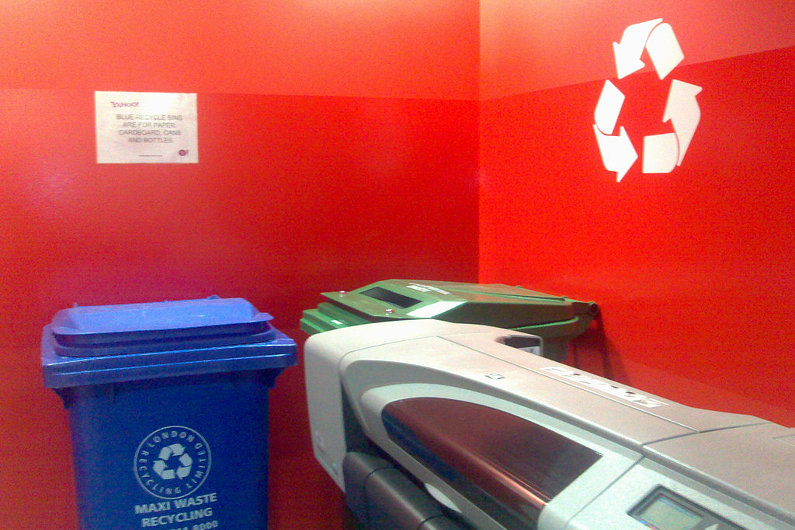When it comes to sustainability, there are some brands who are ahead of the game and others who are not so. Bringing a more sustainable outlook to your brand can bring so much potential to appeal both to a wider audience and save money in the long run. However, to be able to achieve this successfully, brands must first come away from the traditional operation practices and adopt new methods.

Becoming Sustainable: How?
Let’s look at the common approach to sustainability within a business. In most cases, everything stems from reviewing the current processes in place. From this, areas of improvement can be flagged, and then changes can be made, normally in the form of swapping out environmentally-unfriendly old equipment with new, eco-considerate ones. But this basic approach of swapping out doesn’t achieve anywhere near the full scope of potential when it comes to sustainability.
It’s easy to set the new changes, the challenge would be to broaden the minds of your employees and keep them mindful on materials they’re disposing because to them waste is waste no matter the type.
The idea to put in practice would be to think of waste as not waste at all. It isn’t without value to the company — it won’t be used by the employee, but it is still a valuable resource that the company has produced and that could be used. This kind of message needs to be expressed to everyone within one company, which is the challenge which needs to be addressed before event comes near an entire industry.
1. Everyone Needs to Contribute
The first action would be to take down the wall of doubt and put faith in the people within your organisation. In most cases, everyone wants to do the right thing and now more than ever, people have become inherently aware of their impact on the environment and want to reduce it. Most accept that it is a group effort too!
The bigger wall to scale is long-term vs short-term. Often, short term goals can conflict with long-term ones; they are, by their very nature, more immediate and therefore seem more achievable. There’s a sense of response and feedback far quicker with short-term goals. In order for long-term goals to be stuck to, a form of monitoring, measuring, and reward along the way is needed in order to maintain enthusiasm to reach that distant goal.
2. Make it a Company-wide Effort
There’s also action required to ensure it is indeed a joint company-wide effort. Silo working, that is, groups within the company who are reluctant to share information with others in the same company, can prove a problem. It also encourages the damaging thought process of shifted responsibility, for example, teams leaving the entire responsibility on the sustainability team and ignoring the need to change their own attitudes towards sustainability for the process to work. Changing this attitude helps engrain a consistent focus on sustainability among all employees.

A recommended place to start this process is via procurement. Here, we will look at a company’s waste management process, whether it’s small-scale bin collection or a frequent need to hire a skip, as an example:
During the reviewing of the company’s old waste management processes, the focus usually involved is around simple cost-saving while achieve a like-for-like service. This causes a heavy focus on price per lift and the frequency of collection that can be offered by a third party. But this does not help a company achieve its long-term sustainability goals; even if the service obtained is well-documented, it is still the same old process, just better recorded! Instead, success is better found is moving away from the old process and accepting that, while it worked for the company then, it no longer supports the need for sustainability now.
A new process needs to be created revolving around your new sustainability goals. In doing so, you’ll have a new process in place that is more flexible, more creative, and far more efficient for your workplace and its current goals. It’s a case of working smarter, not harder.
3. Transparency
Another thing to consider for a company’s sustainable process to strengthen is transparency. A published statement, declared timescales, and defined targets are far more convincing than a sweeping statement of commitment to the cause.
Goals are goal, not threats – businesses should avoid keeping these to themselves because of fear of failure. If the goals cannot be reached, be open as to why this is. You may have found an external or internal factor that prevented a goal being met. If so, shining a light on this can encourage change across the board. In turn, this leads to improvement and innovation, which is only a good thing!
Takeaway
Becoming a sustainable retailer means that you need a concerted company-wide effort from your stakeholders. This is not an easy task to have everyone share the same beliefs, but it’s a worth-doing hassle which matters to your company and brands.
Probably the best route for you is to seek advice for change management from the likes of Impact International, who provide expert training that would help you develop the confidents to lead your company through big changes. The biggest challenge is certainly bringing everyone within the company on the same page as quickly as possible to ensure it’s a smooth process.




